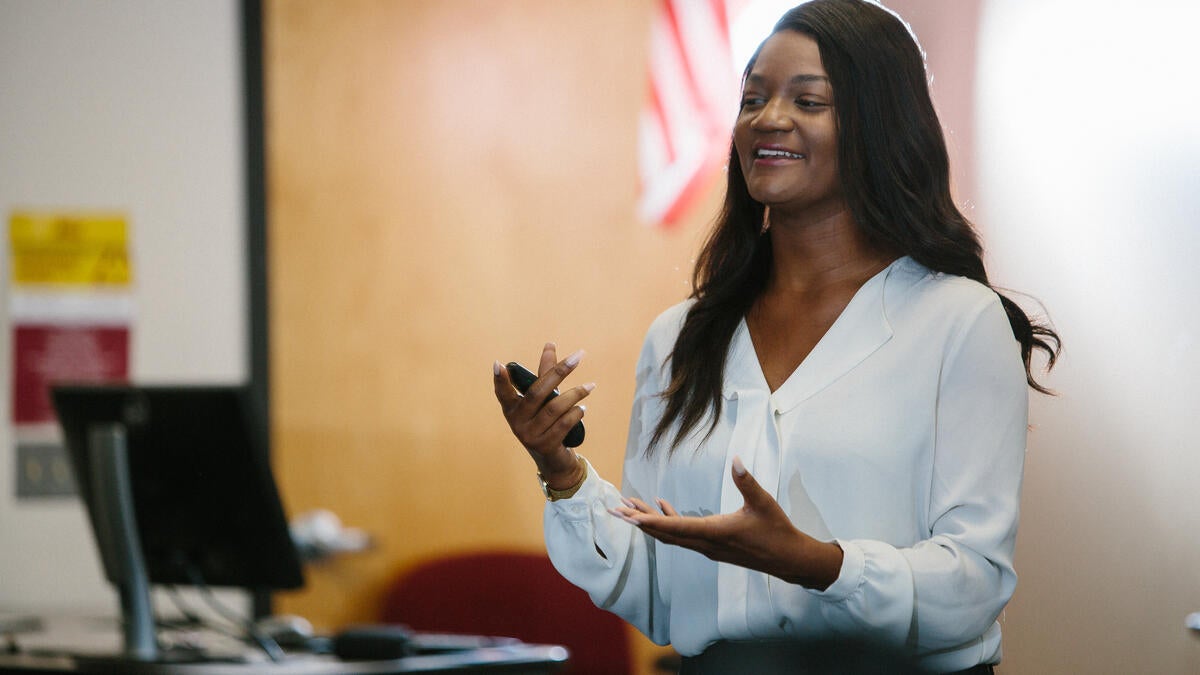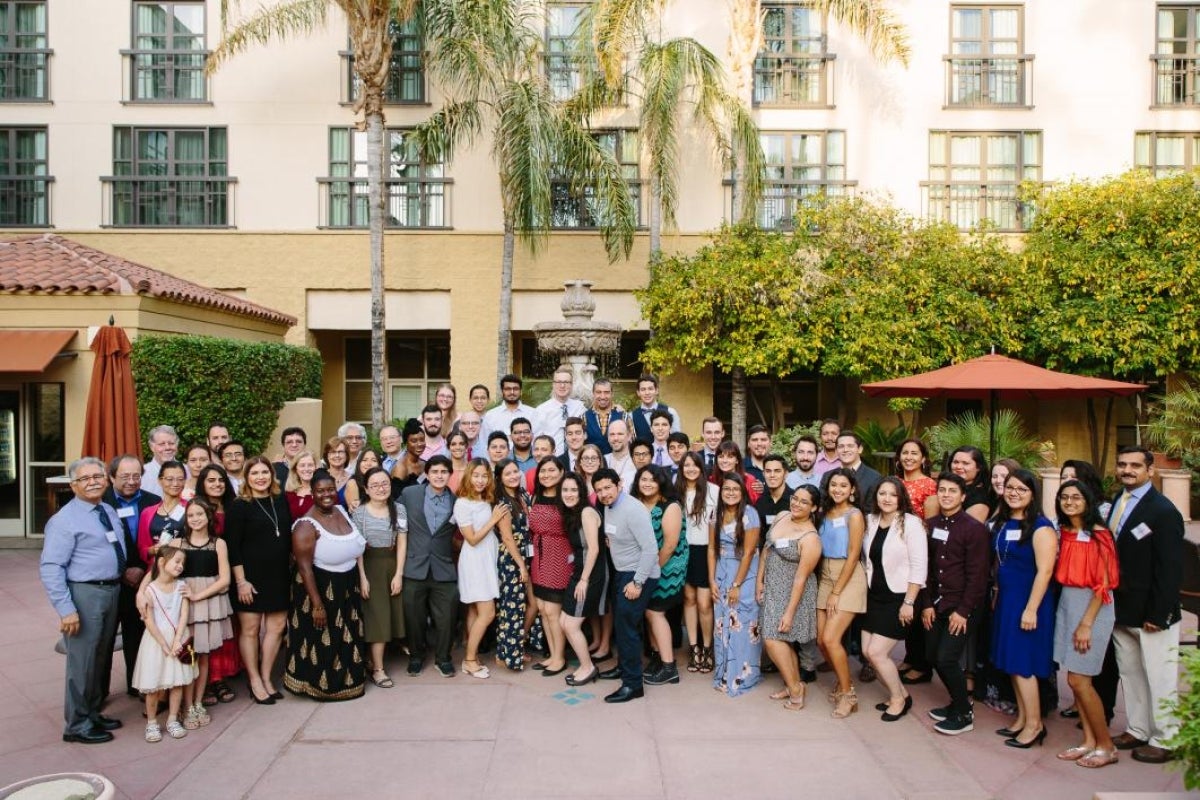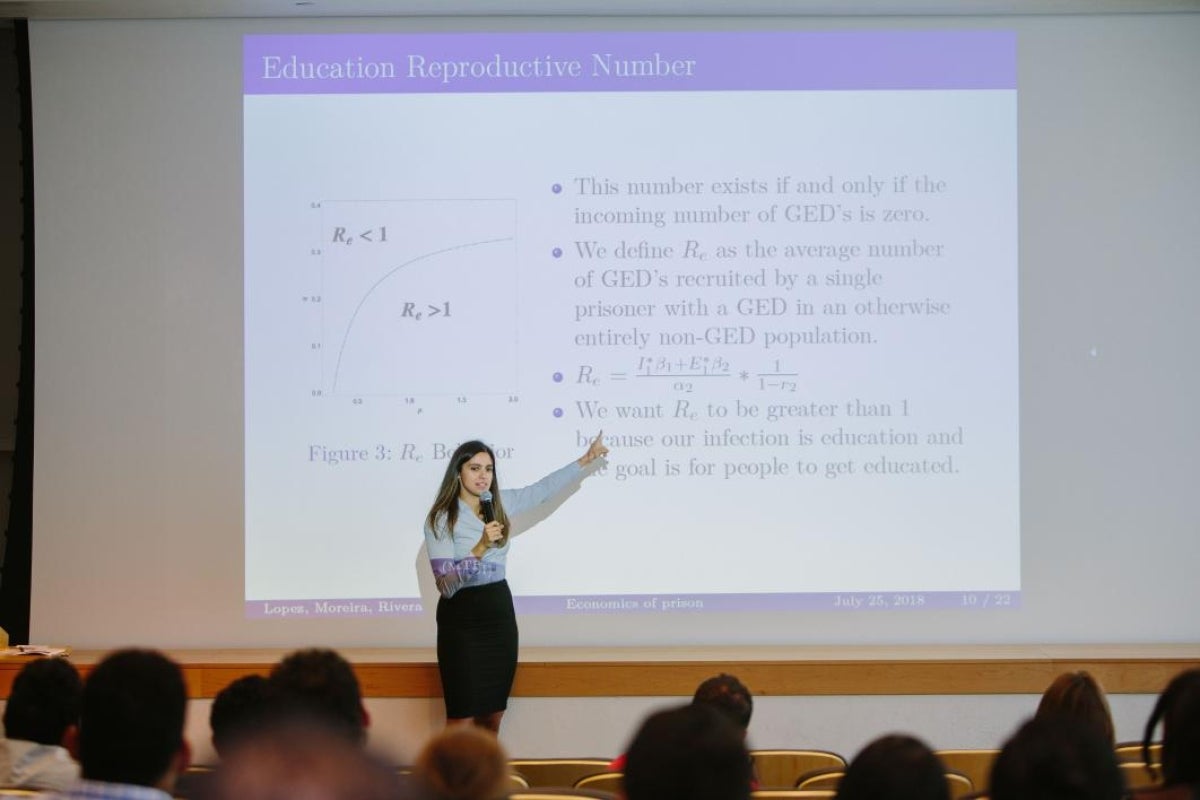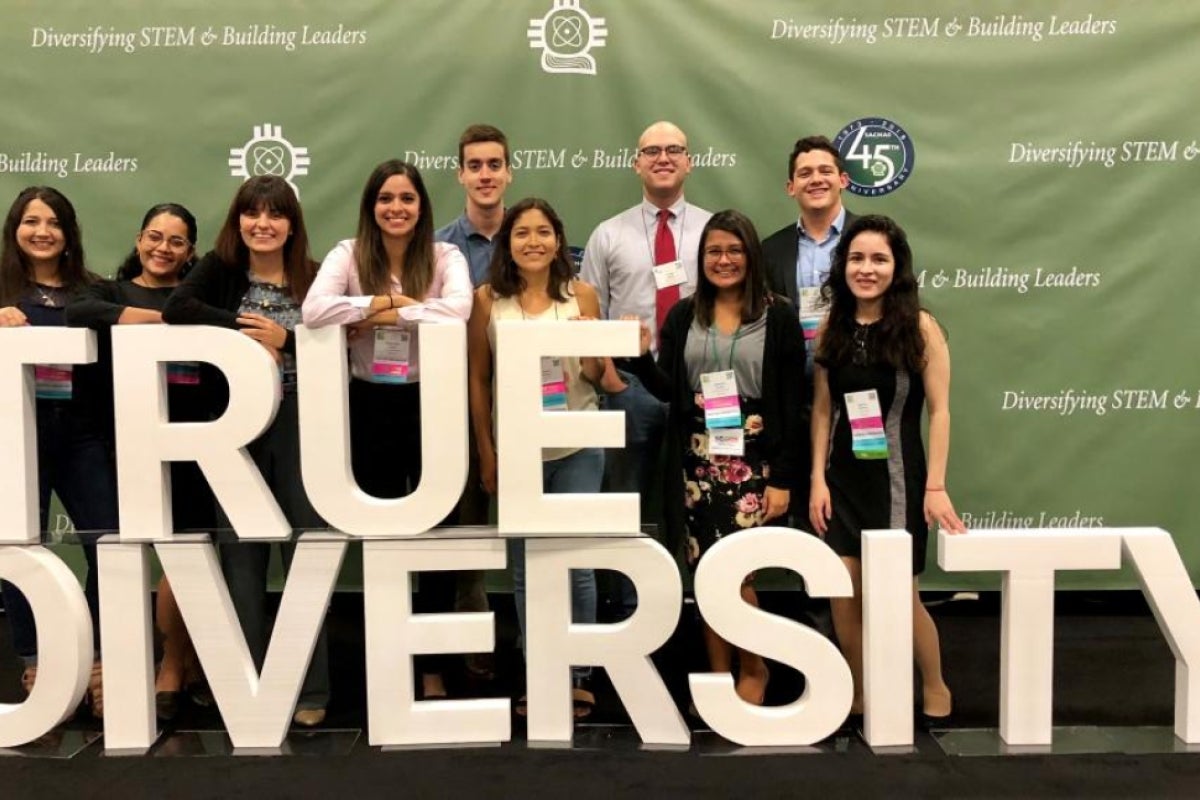Every year at Arizona State University, one program works to bring students from different universities and even countries together to solve real-world problems, connect with internationally renowned experts and be inspired to pursue the next academic step in their STEM careers.
The Mathematical and Theoretical Biology Institute is an intensive, eight-week summer program that aims to prepare undergrads from any college for graduate school, with a special focus on underrepresented-minority students.
Out of over 200 applicants each year, the program carefully accepts a total cohort of 25-35 students.
Part of the Simon A. Levin Mathematical and Computational Modeling Sciences Center, this institute gives students the chance to develop and work on their own projects and later present their findings, all the while receiving valuable mentorship from ASU faculty and each other.
“The program was strategically designed to attract and train students with no previous research experience who would not otherwise have access to a world-class, graduate-style learning environment,” said founder and Regents’ Professor Carlos Castillo-Chavez.
“Typically, when participants first arrive at the institute, they are either unmotivated or unclear about graduate school — but by the end, almost all are interested in that option,” added the program’s co-director, Assistant Professor Anuj Mubayi.
Castillo-Chavez created the institute 22 years ago and brought it to ASU in 2004 with the hope of broadening its participation. Now serving as co-director along with Mubayi, he has watched that vision become a reality, with almost 600 undergraduate students and nearly 200 graduate student mentors participating to date.
The program has significantly contributed to an increased diversity among those receiving a PhD in mathematical sciences.
The Simon A. Levin Center reports that, out of 596 alumni, 27 percent have earned a PhD, and 60 percent of those degrees went to underrepresented-minority students.
Funding comes from both local and federal sources — currently including the National Science Foundation (which has made the institute part of its Research Experiences for Undergraduates program), the National Security Agency, the Alfred P. Sloan Foundation, the ASU Office of the President and the ASU Office of the Provost.
For on-ground support, the program draws heavily from the faculty and postdoctoral researchers of the School of Human Evolution and Social Change, in which Castillo-Chavez and Mubayi are faculty members, though staffing for its lecturer and mentor roster is a team effort that includes subject experts from across the university, nation and world.
A transformational experience
During the first three weeks of the program, students attend special lectures and classes by guest speakers and program faculty throughout the day, and then spend their evenings doing homework. The fourth week is the critical research design phase, where students choose research on topics of their interest with help and insight from faculty and select peer groups so they can tackle the issues together.
“Working together and learning from each other naturally leads to a cross-sharing of one’s culture and values,” said Castillo-Chavez. “Through this exchange, our students gain perspective about how to better contribute to their communities.”
The last four weeks are spent doing rigorous research and creating math models to address their selected problems. At the end of the program, there is a banquet and poster symposium where students formally present their findings. Many participant groups go on to present their research at conferences around the country, or continue the research they began during the program along with their mentors to submit for publication.
Aside from these scholarly pursuits, another important aspect of the program is allowing students to have fun and connect with their mentors and each other, building a network of STEM peers. Community activities range from talent shows to trips to the Grand Canyon, and every weeknight students chat with faculty and tutors over dinner for “mentor meals.”
“The institute is not just about learning mathematics and biology, discovering new research techniques, or creating new models to aid in solving complex, real world problems. It’s about building relationships and connections with others,” said Mubayi.
Daniel Romero, currently an assistant professor at the University of Michigan and a guest lecturer at last summer’s program, says that his participation in the institute was a transformational experience.
“After attending the institute, I knew I wanted to get a PhD and become a professor so I could continue doing research for life,” he said.
Beverly Gonzalez, another alumnus, has a multifaceted career — she’s a mathematical statistician for the U.S. Department of Veterans Affairs, an affiliated assistant professor at the University of Illinois and Northwestern University, and an adjunct professor at Northeastern Illinois University.
“This program exposed me to real-life applications for mathematics and biostatistics, which led me to pursue my degree in applied mathematics and led to my current roles,” she said.
Several current ASU faculty are also alumni of the institute, including Mubayi, Associate Professor and Simon A. Levin Center co-director Yun Kang, Associate Professor Erika Camacho, Professor Stephen Wirkus, Lecturer Raquel Lopez and Instructor Arlene Evangelista.
“Once you join the Mathematical and Theoretical Biology Institute Family,” said program coordinator Rebecca Perlin, “you are family forever.”
Applications for the summer 2019 program are open through Jan. 31.
Top photo: Karen Funderburk presents her final report as a student in the summer 2017 program. Funderburk is now an applied math for the life and social sciences graduate student in the School of Human Evolution and Social Change. Photo courtesy of the Mathematical and Theoretical Biology Institute
More Science and technology

ASU postdoctoral researcher leads initiative to support graduate student mental health
Olivia Davis had firsthand experience with anxiety and OCD before she entered grad school. Then, during the pandemic and as a result of the growing pressures of the graduate school environment, she…

ASU graduate student researching interplay between family dynamics, ADHD
The symptoms of attention deficit hyperactivity disorder (ADHD) — which include daydreaming, making careless mistakes or taking risks, having a hard time resisting temptation, difficulty getting…

Will this antibiotic work? ASU scientists develop rapid bacterial tests
Bacteria multiply at an astonishing rate, sometimes doubling in number in under four minutes. Imagine a doctor faced with a patient showing severe signs of infection. As they sift through test…



